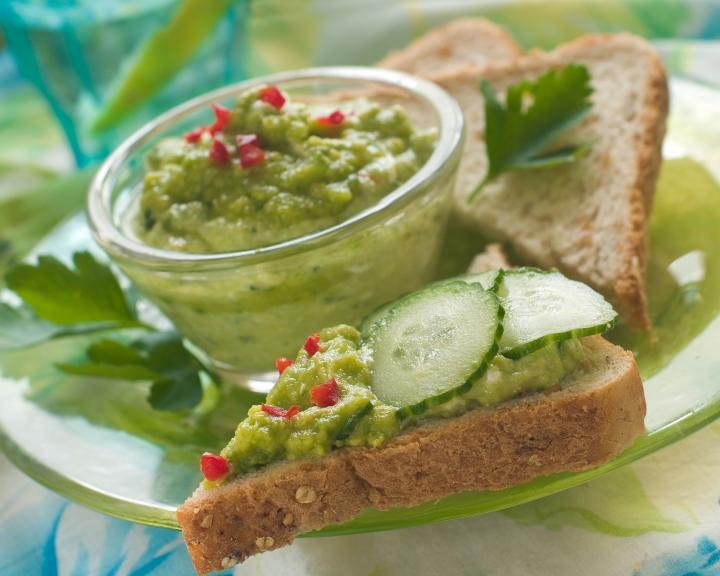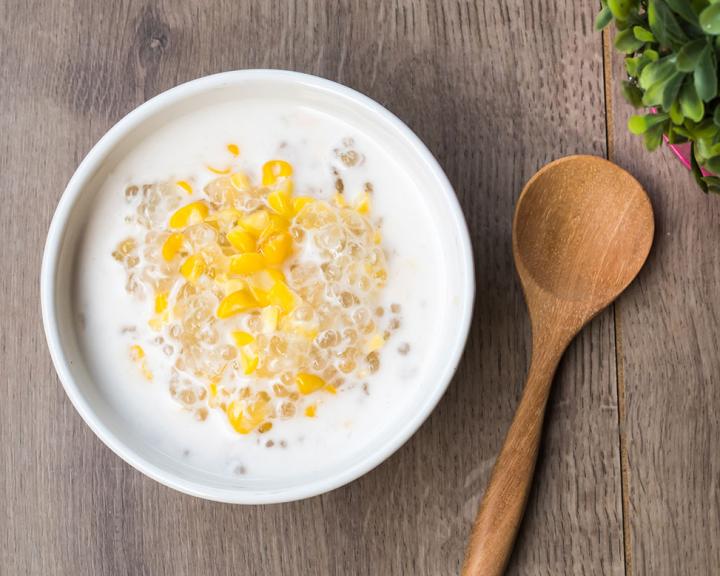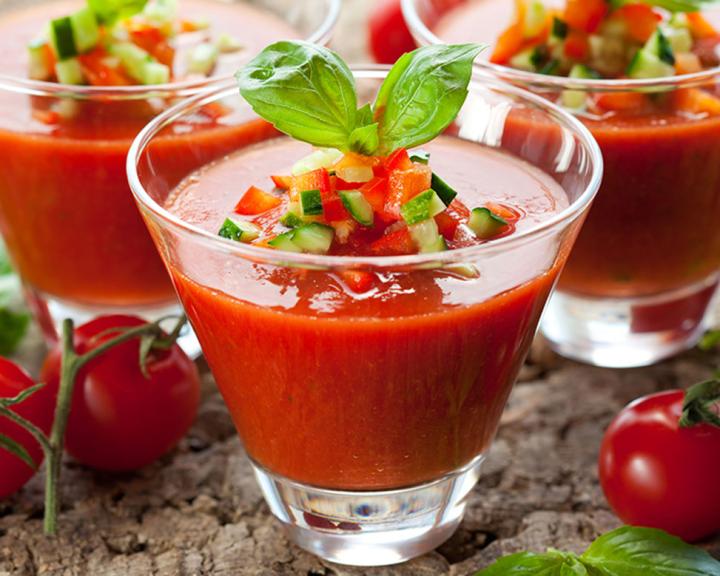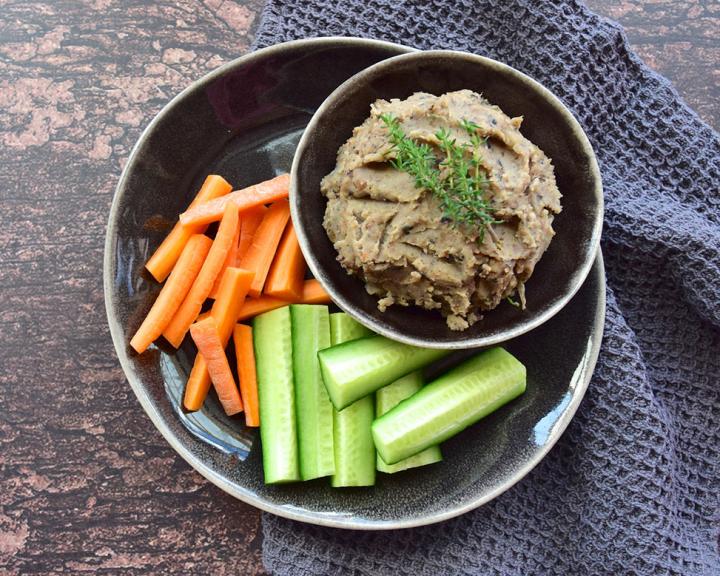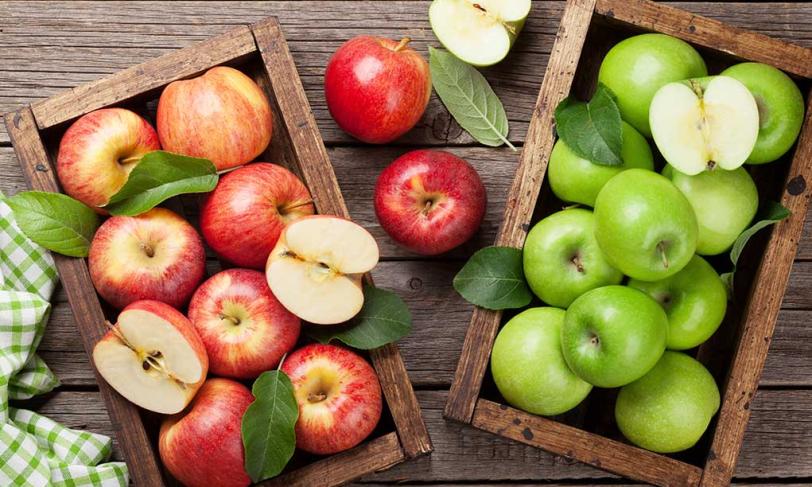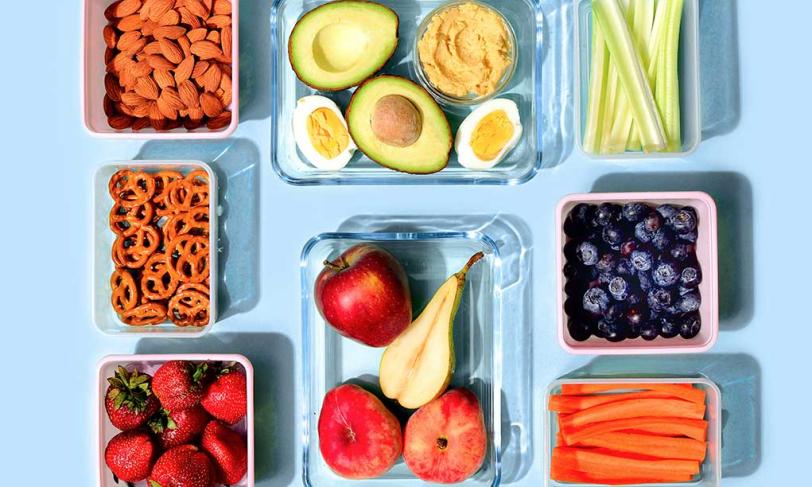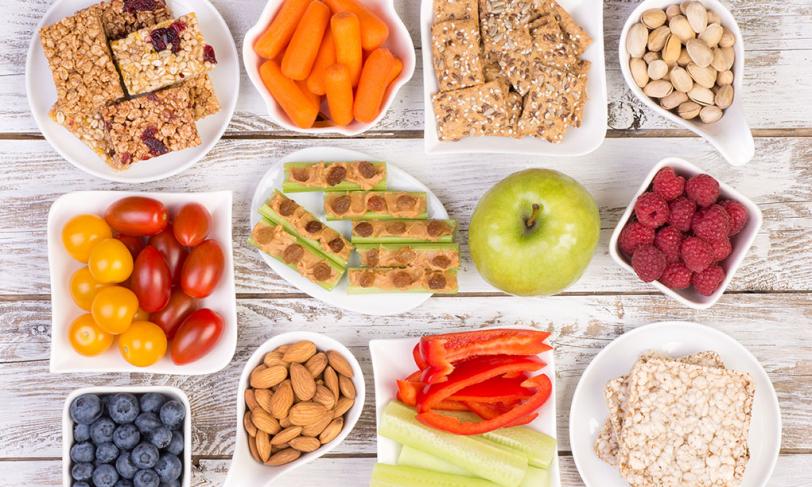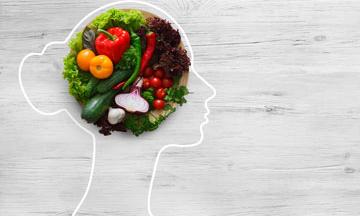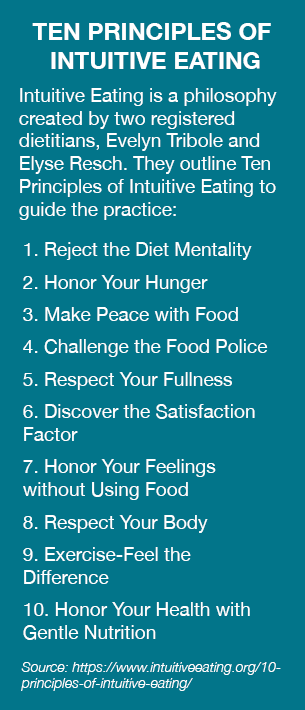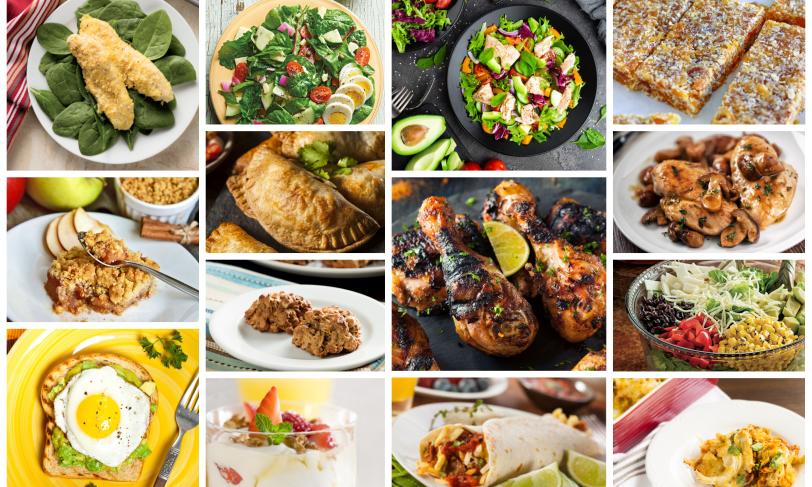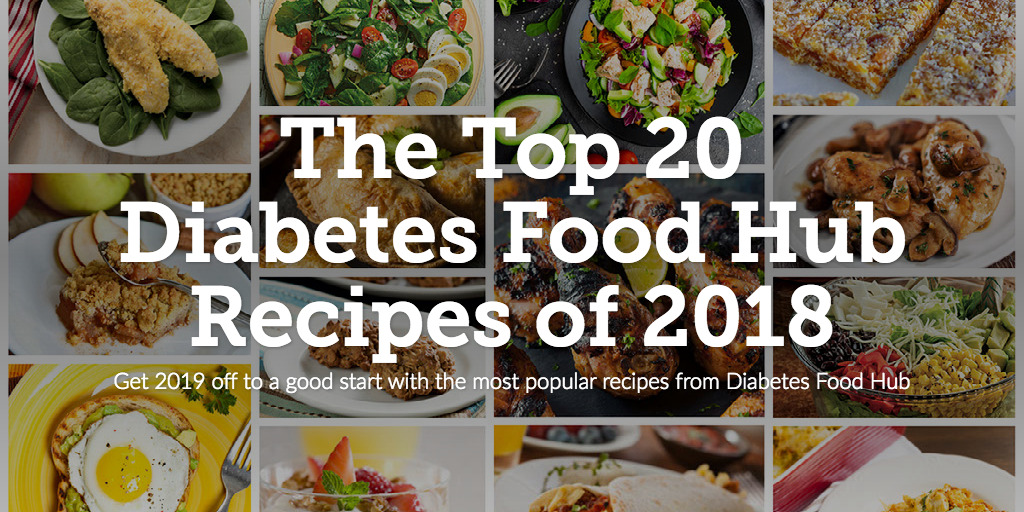Snacks can serve a lot of purposes—tiding you over between meals, preventing hypoglycemia, helping you recover from a workout and more. Whatever the reason for your snack, we’ve got 25 simple ideas to help you make healthy choices.
Related: To snack or not to snack? Read our article on healthy snacking, and whether or not snacking is right for you.
NOTE: Calorie and carb amounts are approximate and do not include optional suggestions.
1. Turkey Cheese Wrap: Stack a slice of cheese on top of a slice of turkey deli meat. Top with a handful of fresh greens such as spinach or arugula and wrap tightly. (110 calories, 2 g carb)
2. Green Wrap: spread ¼ of an avocado over a small (6-inch) whole-wheat tortilla. Top with a handful of fresh greens such as spinach or arugula and wrap tightly. (160 calories, 18 g carb)
3. Savory Yogurt Parfait: top ½ cup nonfat plain Greek yogurt with ¼ cup chopped cucumber. Drizzle with 1 tsp olive oil, and season with salt and pepper. (120 calories, 5 g carb)
4. Yogurt Parfait: top ½ cup nonfat plain Greek yogurt with ¼ cup berries or other chopped fruit and 1 tbsp chopped nuts. (130 calories, 9 g carb)
5. Ranch & Raw Veggies: dip raw veggie sticks (like cucumber, red bell pepper, or radishes) in 2 tbsp ranch dressing. (140 calories, 5 g carb) Try this recipe
6. Guacamole & Raw Veggies: dip raw veggie sticks (like cucumber, red bell pepper, or radishes) in ¼ cup guacamole. (120 calories, 5 g carb) Try this guacamole recipe
7. Avocado Bowl: Top half an avocado with 1-2 tbsp salsa and 1 tsp shredded cheese—eat it right out of the avocado skin. (125 calories, 7 g carb) Try this recipe
8. Fruit & Cheese: have one small piece of fruit (like a plum or clementine) with a string cheese. (110 calories, 9 g carb)
9. Edamame: 1 cup steamed edamame in pods, sprinkled with reduced-sodium sodium soy sauce. (115 calories, 8 g carb)
10. Cucumber Boats: Slice a small cucumber in half lengthwise and scoop out the seeds. Fill one cucumber half with ½ cup tuna or chicken salad. (160 calories, 9 g carb) Try this chicken salad recipe
11. Plain Cottage Cheese: ½ cup low fat cottage cheese. (90 calories, 5 g carb)
12. Savory Cottage Cheese: ½ cup low fat cottage cheese topped with ¼ cup chopped tomato and/or cucumber. (100 calories, 6 g carb)
13. Sweet Cottage Cheese: ½ cup cottage cheese topped with ¼ cup fruit such as berries, chopped pineapple, or peaches. (100 calories, 8 g carb)
14. Cream cheese & Cucumber sandwiches: sandwich 1 tsp of cream cheese between 2 cucumber slices (make 6 sandwiches total). (80 calories, 1 g carb)
15. Peanut Butter Sandwich Crackers: sandwich 1 tsp peanut or other nut butter between 2 whole grain crackers (make 2 sandwiches total). (160 calories, 13 g carb)
16. Celery & Peanut Butter: fill a few celery sticks with 1 tsp of peanut butter each. Optional: dot each with a few raisins. (100 calories, 4 g carb)
17. Roasted Chickpeas: ¼ cup roasted chickpeas.(75 calories, 9 g carb) Try this recipe
18. Popcorn: Drizzle 1 tsp olive oil over 2 cups air popped popcorn. Season with salt and pepper or other spice blends such as Old Bay, cajun seasoning, lemon pepper, etc. (100 calories, 12 g carb)
19. Apple slices & Nut Butter: slice half of a medium apple and dip in 1 tbsp peanut or other nut butter. Add a sprinkle of cinnamon for flavor. (150 calories, 15 g carb) Try this recipe
20. Hummus & Raw Veggies: dip raw veggie sticks (like cucumber, red bell pepper, or radishes) in ¼ cup hummus. (140 calories, 15 g carb) Try this hummus recipe
21. Trail Mix: combine 1 tbsp each of pumpkin or sunflower seeds, chopped nuts, and raisins or other dried fruit. (125 calories, 10 g carb)
22. Peanut Butter & Chocolate: 2 mini Hershey’s Special Dark Chocolate bars dipped in 2 tsp peanut butter. (135 calories, 12 g carb)
23. Nut Butter Toast: 1 slice whole grain bread, toasted, topped with 1 tbsp peanut or other nut butter. (185 calories, 18 g carb)
24. Avocado toast: 1 slice whole grain bread, toasted, topped with a quarter of a small avocado. Optional: top with 1 tsp sunflower or pumpkin seeds. (155 calories, 18 g carb)
25. Hard-Boiled Egg: Prepare several hard-boiled eggs and store unpeeled in the fridge for a quick protein-packed snack. Optional: season with salt and pepper or hot sauce. (80 calories, 0 g carb)
